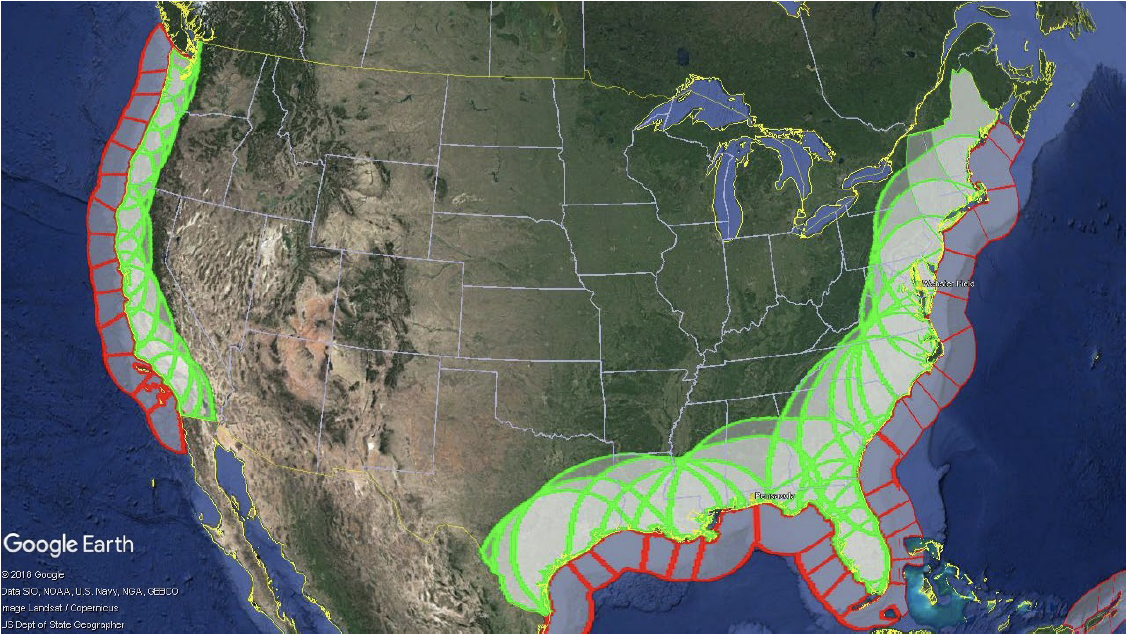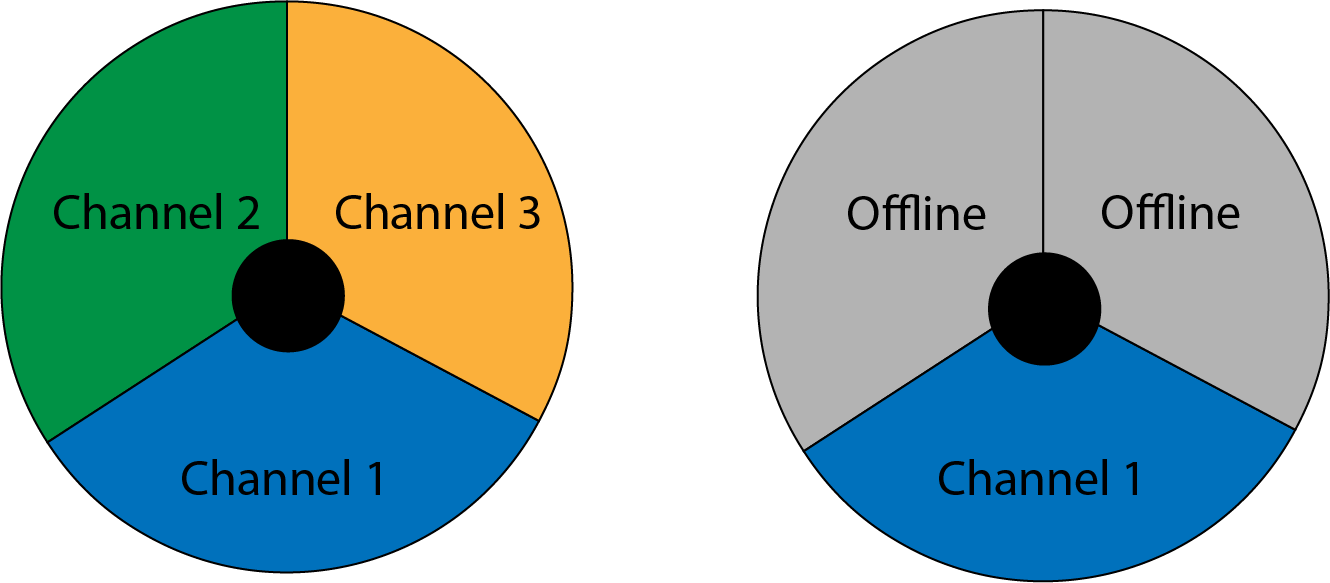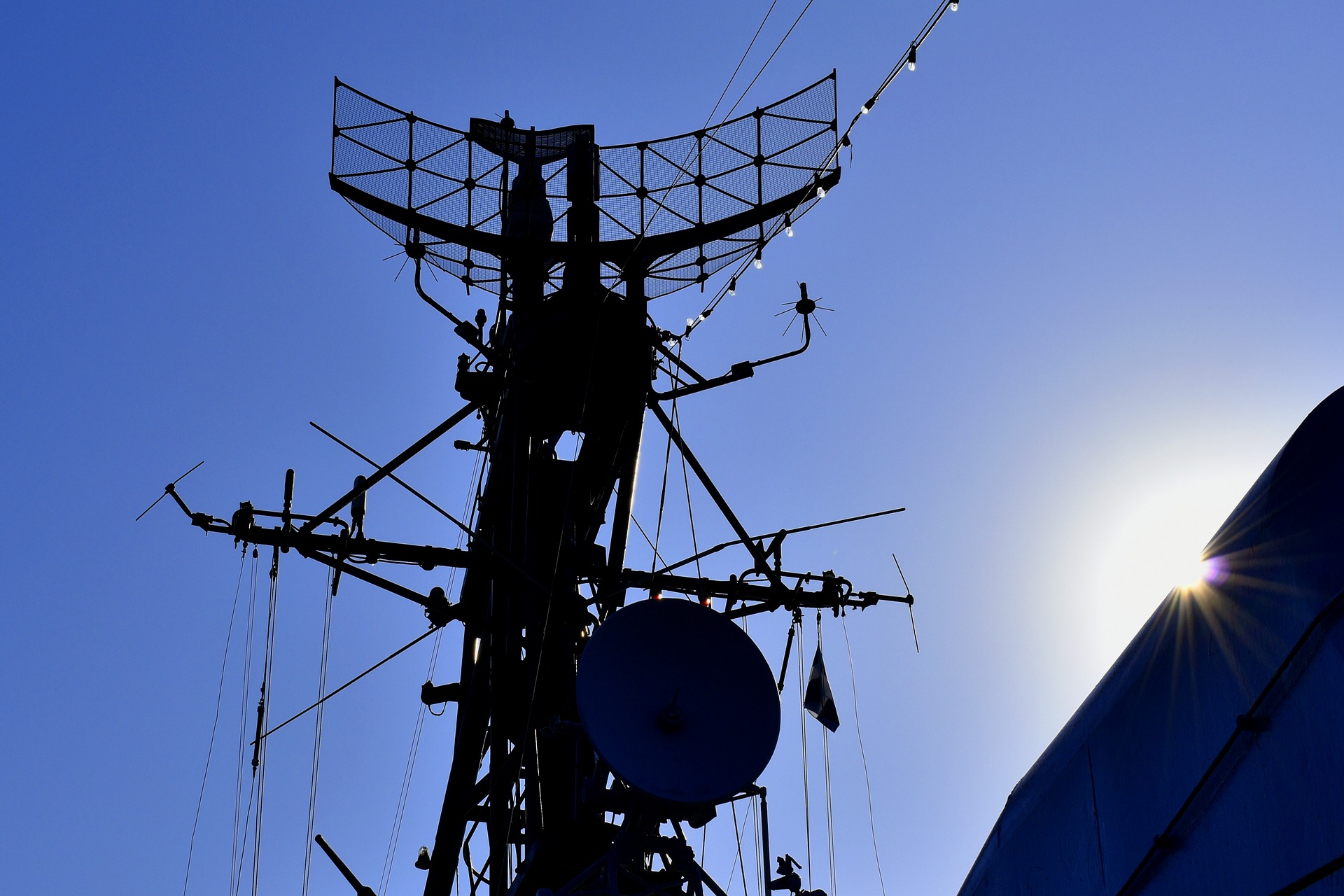Citizens Band Radio Service (CBRS) is a boon to operators looking for new sources of spectrum. However, unless you are an incumbent, access to CBRS spectrum is not guaranteed. Even if an operator paid for a Priority Access License (PAL), they must vacate a channel when an incumbent needs it. Some incumbents are fixed, their location and frequencies well-known, which makes it easier to avoid interfering with them. Others however, in particular the US Navy, are mobile with few fixed installations. Since the Navy’s activities affect over 95,000 miles of US coastline and some interior areas – and over 30% of the country’s population (per 2017 estimates from the US Census Bureau) – this is not a minor issue.

Figure 1: Dynamic Protection Areas (DPAs) along the lower 48 coastline of the US
One way to ensure reliable CBRS operations is to minimize the number of CBRS channels (spectrum) required. This is not easily done by most systems which will introduce unacceptable levels of self-interference with high frequency reuse.
Dynamic Protection Areas (DPAs)
Whenever Navy radar is deployed, a CBRS dynamic protection area (DPA) is activated. A DPA is a pre-defined area where an incumbent could have operations and must be protected from interference by other users. As a general rule of thumb, residential Category A CBRS (CBSD) devices use DPA neighborhoods of up to 150 km in size. Category B CBSDs (mounted on towers) range from 150 km – 450 km depending on location.
DPA activation mandates grant suspension for non-incumbents that might cause interference on the affected frequencies in the neighborhood. This will adversely affect links that previously worked fine and now must switch to another channel. Operators working with equipment that requires multiple frequencies (k=2, 3, etc.) to avoid self-interference are especially hampered. In the case of PALs, they’re paying twice or three times the cost (or more) and yet service stability is at risk if they lose even part of that spectrum due to incumbent need. Essentially, the need for a wider swathe of spectrum (multiple channels) makes that operator’s equipment more at risk for service interruption.
DPAs in the Real World
As the graphic below shows, an operator might require 3 channels to operate a tower without causing undue self-interference. This is a very common scenario. But what happens if a DPA is activated that conflicts with some of the channels? Whether those channels are PAL or GAA doesn’t matter. The grant issued to the operator’s equipment will be suspended and the operator is left scrambling to find two other channels or be shut down.

Figure 2: 3 channel sectors before and after DPA outage
Tarana’s Gigabit 1 (G1) platform is uniquely suited to take full advantage of CBRS while minimizing potential service interruptions. G1’s ability to use a single channel across up to 4 sectors on a tower helps reduce risk for operators in cases of spectrum unavailability. A significant feature of G1 is its ability to eliminate the impact of interference: both self-interference and that from third-party (non-incumbent) devices. It does this with a multi-faceted approach using custom hardware and software.
If a DPA is activated and that channel is suspended, only one new channel must be located rather than 3. This makes G1 a more agile solution when reacting to adverse DPA actions that impact spectrum availability. Savvy operators will also note that the need for fewer channels translates to savings in the number of PAL licenses to purchase as well.
For more information on how G1 achieves these incredible results, check out our blogs on ABIC, G1 NLoS performance, and beamforming. You can also get a white paper that explores this topic by dropping us a note at info@taranawireless.com.
If you just can’t wait to learn more, reach out to us. We’d love to hear from you.


